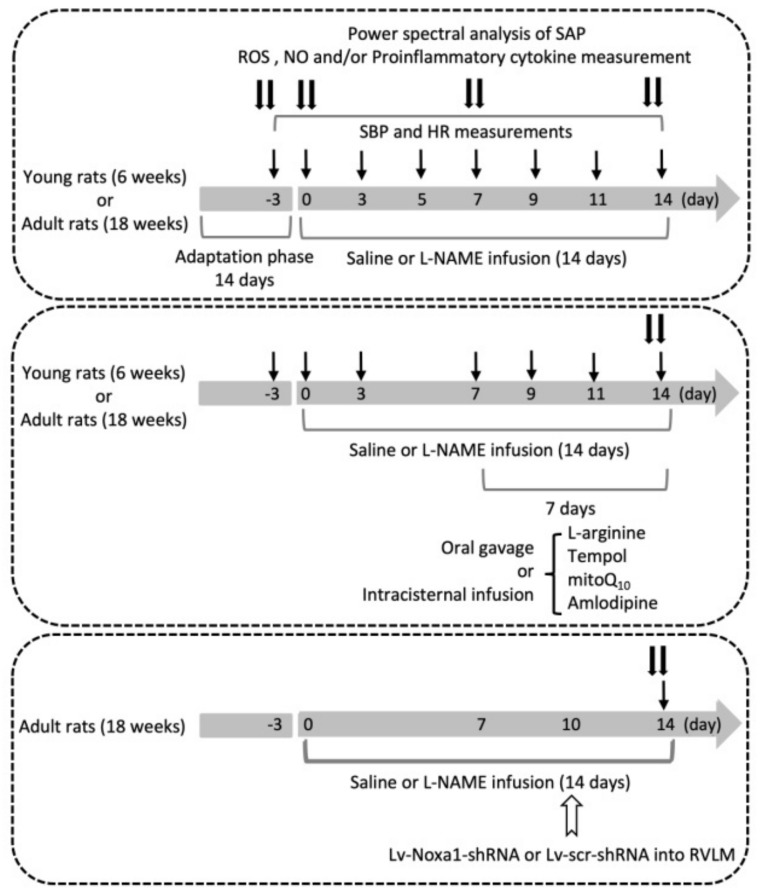Figure 1.
Experimental design of the present study. The first group of young and adult animals (n = 6 per group) was used to assess systolic blood pressure (SBP), heart rate (HR), and power density of low-frequency component in the SBP spectrum at various time intervals (arrows) before and after i.p. infusion of l-NAME for 14 days. Nitric oxide (NO), reactive oxygen species (ROS), and/or proinflammatory cytokine in plasma and/or tissue of rostral ventrolateral medulla (RVLM) were measured at the end of the 14-day l-NAME treatment (double arrows). The protocol was repeated in a second group of young and adult rats (n = 5 per group) to evaluate the effect of various treatments, delivered via oral gavage or intracisternal infusion during days 7–14, on l-NAME-induced changes in SBP, HR, LF power, and NO and ROS levels in RVLM. The third group of adult animals (n = 6 per group) was used to examine the effect of gene silencing NADPH oxidase activator 1 (Noxa1) in RVLM on changes in SBP, HR, LF power, and NO and ROS levels in RVLM induced by systemic l-NAME. Lentiviral vector contains a target-specific construct that encodes a short hairpin RNA (shRNA) to knock down gene expression of Noxa1 (Lv-Noxa1-shRNA) or control scrambled shRNA (Lv-scr-shRNA) was microinjected into the bilateral RVLM (open arrow) on day 10 after l-NAME infusion.

